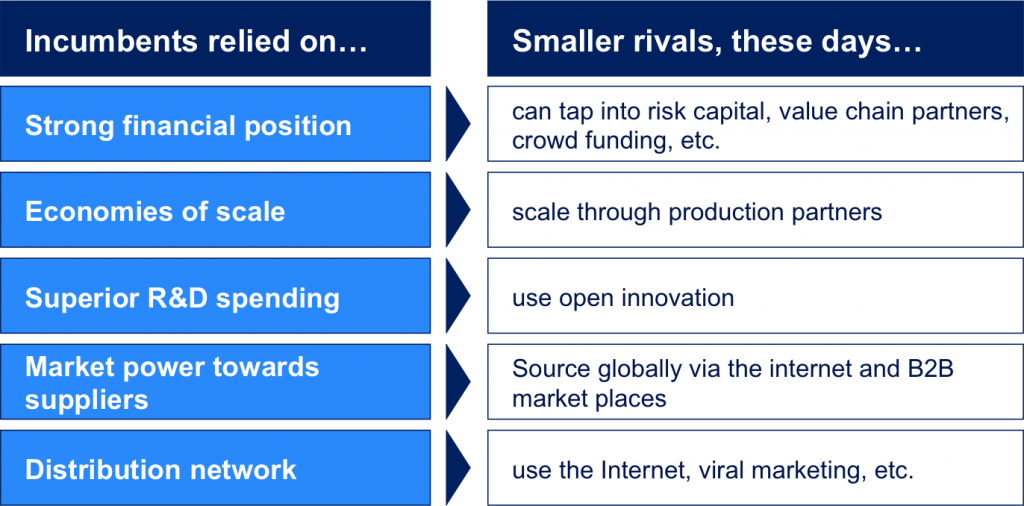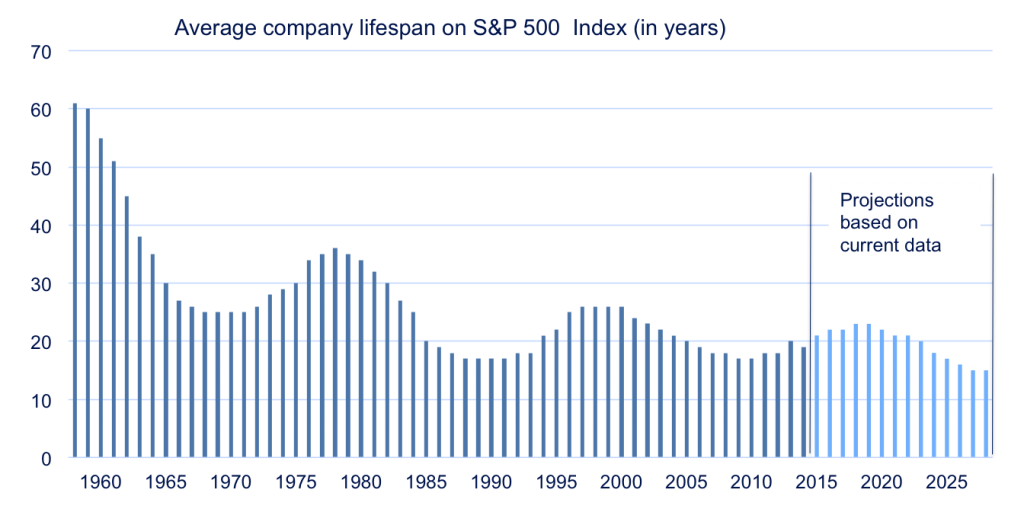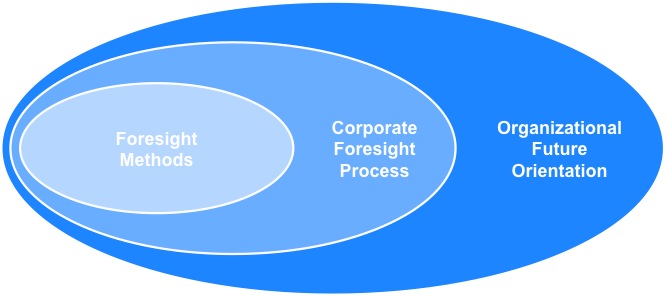Some of you might wonder why we have introduced ‘Organizational Future Orientation (OFO)’ as a new term rather than relaying on established concepts such as ‘Corporate Foresight‘, ‘Long Range Planning‘, ‘Environmental Scanning‘, or ‘Dynamic Capabilities‘.
The simple reason is that we feel that the real issue of how organizations can stay successful in turbulent and hyper-competitive environments is not sufficiently addressed by the existing concepts. With introducing Organizational Future Orientation as a holistic concept we want to revive the quest to identify practices through which organizations can:
- explore trends and drivers of change
- identify attractive future markets
- build superior competitive positions
- ensure long-term survival and success
We believe that we are dealing with a moving targeted. We believe that how OFO is built and how it creates value is highly context dependent and dependent on the strategic posture of an organization. To establish however some common ground we propose as a working definition:
Organizational Future Orientation (OFO) is build through a set of practices that permit to identify and interpret changes in the environment and drive adequate actions to ensure long-term survival and success.
The problem
Today, most of our organizations are built with a focus on operating the current business. They tend to focus most of their attention on becoming more efficient and on how to use short-term strategic maneuvering to outcompete rivals, safeguard against new entrants and sustain the current competitive position in the current business.
This implies that (top) management is not sufficiently focused on creating future perspectives. Hamel and Prahalad proposed in three Harvard Business Review article that top management attention is following a 40:30:20 rule, where 40% of their attention is devoted to looking outward, of which 30% is spend on peering three, four, five, or more years into the future and of that no more than 20% is devoted to building a collective view of the future (the other 80% is spend on considering the future of the manager’s particular business), which leads them to propose that:
Only 3% of a top manager’s time is devoted to creating future perspectives
Earlier in the 60s and 70s this lack of building a future perspective did not necessarily threaten the survival of large organizations. Sheer size-advantages often permitted them to retain their competitive position in the market. Today however smaller rivals have build a powerful arsenal of mechanism, which allows them to increasingly challenge and eventually outcompete the much larger incumbents.

That incumbent’s failure to built practices that ensure long-term success and survival is also emphasized by a study from INNOSIGHT, which estimates that the tenure of firms in the S&P 500 index has dropped from 61 years in 1958 to only 18 years today.
Towards a solution
To tackle the questions how companies become future oriented and thus ensure long-term survival and success, scholars have proposed that corporate foresight (i.e. systematic practices to identify future change and identify opportunities and threats) can offer hope. To better understand the role of corporate foresight it is useful to distinguish two levels:
- Methods such as scenario technique, delphi analysis, etc., that allow us to explore the future, identify alternative futures or make predictions
- Processes that ensure that future insights are passed on to units that can design and drive organizational responses. Such units might include innovation management, strategic management, controlling, risk management, or corporate/business development
To these two levels we add a third and propose that:
Organizational Future Orientation leverages on corporate foresight methods, utilizes corporate foresight processes, but goes further and includes practices that permit an organization to probe into future markets. Probing practices can include (1) building think tanks that permit to engage with external stakeholders and inspire collaborative action, (2) operating new business-development units that make mid-sized investments to build future options, and (3) building corporate venturing units that permit to nurture a portfolio of promising future businesses.
We believe that the search for solutions on how organizations can systematically build future options and renew their competitive advantage is still at its beginning. We want to contribute to this search by sharing on this blog good practice, discuss methods and approaches and point at relevant conferences and seminars.
We are looking forward to engage with you!


5 Responses to “What is Organizational Future Orientation”
Are winning companies building future orientaiton on process of people? | Organizational Future Orientation
[…] discussed in our first blog post, we believe that future orientation can be attained both […]
Organizational Future Orientation at the Academy of Management | Organizational Future Orientation
[…] This years Academy of Management Annual Meeting in Montreal has attracted over 9000 scholars from around the world. Given the size of the conference there were multiple tracks that touched Organizational Future Orientation. […]
Theoretical foundation: Dynamic Capabilities | Organizational Future Orientation
[…] our view of organizational future orientation we agree with this assumption and add a particular emphasis on the role of the manager to enable […]
Theoretical foundation: Strategy as Practice | Organizational Future Orientation
[…] therefore think that strategy-as-practice view could be more appropriate for research on organizational future orientation and also produce insights that are more actionable and that have higher practical […]
Strategic Issue Management systems as an ability of Organizational Future Orientation | Organizational Future Orientation
[…] Organizational Future Orientation we hypothesis that issue management inside an organization follows a similar sequence. That qould […]